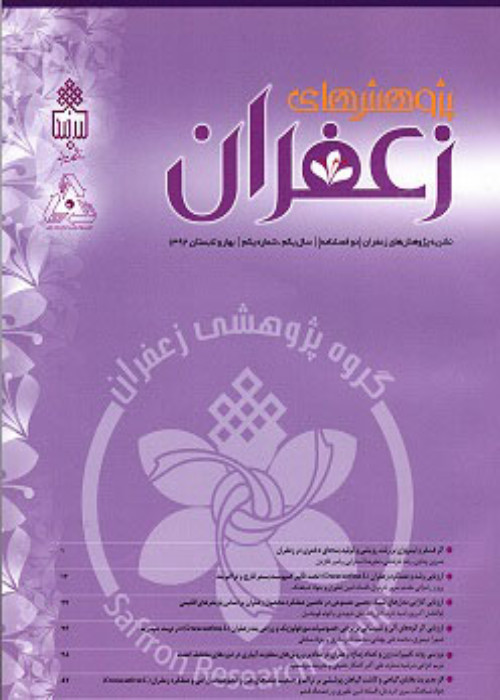The Effects of Seaweed Extract and Ascorbic Acid Foliar Application on Quantitative and Qualitative Traits of Saffron
Among Iran's industrial and export products, saffron has found an important place as the most valuable agricultural product in the world. One of the ways to increase yield in saffron is to provide sufficient number of mineral elements needed by the plant. This research was conducted in order to investigate the effect of biofertilizers including seaweed extract and ascorbic acid on quantitative and qualitative traits of saffron in a farm in Shahrood and Shahrood University of Technology laboratory in 2021.
The experiment was conducted based on the randomized complete block design in three replications. Spraying consisted of seven levels (control: spraying with distilled water), 2, 3 and 4 mg/L of brown seaweed extract (Ascophyllum nodosum), 50, 100 and 150 mM ascorbic acid in the flowering stage. Seaweed extract was used under the Akadine, made in Canada, and ascorbic acid was produced by Merck, Germany. Spraying of the materials were done in three stages (20 february 2021, 5 and 19 march 2022) at 10 o'clock in the morning. During the growing season of the plant (from the fall of 2021 to the end of May 2022), no organic or chemical fertilizers were used either in the form of irrigation or in the form of soil. During this period, the use of herbicides was avoided. The number of four stages of irrigation was applied, similar to previous years. All the plots were irrigated at the same rate and in the form of flooding. Seaweed extract was used under the Akadine, made in Canada, and ascorbic acid was produced by Merck, Germany. Data analysis was done using SAS 9.1 software and the means were compared using LSD test.
The results showed that the number of saffron flowers increased with the application of seaweed extract and ascorbic acid compared to the control. The highest flower fresh weight was recorded in plants that were sprayed with 4 mg/L of seaweed extract. All levels of foliar spraying, except for the lowest level of each substance (2 mg/L of seaweed extract and 50 mM ascorbic acid) caused a significant increase in the dry weight of the stigma compared to the control. The highest stigma dry weight was recorded in plants that were sprayed with 100 mM ascorbic acid. Anthocyanin increased by 11.53, 28.84, and 23.07% in plants that received 2, 3, and 4 mg/L of seaweed extract as a foliar spray, respectively. Total phenol was significantly increased in plants that received 2, 3 and 4 mg/L of seaweed extract and 100 and 150 mM ascorbic acid. The highest amount of total phenol was equal to 6.34 mg/g dry weight, which was related to the plants that were sprayed with 3 mg/l of seaweed extract. The use of seaweed extract at all three levels of 2, 3 and 4 mg/L caused a significant increase in anthocyanin by 11.53, 28.84 and 23.07%, respectively, compared to the control. Among the measured effective substances of saffron, only safranal increased under the influence of seaweed extract. Although the use of ascorbic acid increased the amount of anthocyanin, this increase was not statistically significant.
The results of this research showed that the application of seaweed extract and ascorbic acid in the form of foliar spraying increased traits such as the number of flowers, fresh weight of flowers, anthocyanin and finally the dry weight of saffron stigma. In general, it can be said that the qualitative characteristics of saffron can be improved by using seaweed extract and ascorbic acid. Finally, within the scope of the research, it is suggested to use 4 mg/L of seaweed extract and 100 mM ascorbic acid to increase yield in saffron.
anthocyanin , Ascorbate , biofertilizer , flowering , Safranal , stigma , Total phenol
- حق عضویت دریافتی صرف حمایت از نشریات عضو و نگهداری، تکمیل و توسعه مگیران میشود.
- پرداخت حق اشتراک و دانلود مقالات اجازه بازنشر آن در سایر رسانههای چاپی و دیجیتال را به کاربر نمیدهد.


